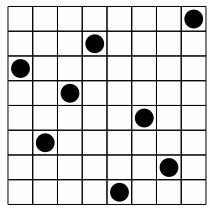
-
2004 April 13
Company Description
AI research company developing human language understanding algorithms based on West Pole style Deep Learning. Research started in 2001.
Syntience Inc. is developing a computer algorithm for generalized Understanding. The initial goal is a system capable of learning and truly understanding any human language by unsupervised learning from a pure text corpus in the target language. Language understanding requires some amount of world understanding which will be learned while learning the language. The algorithm is called Artificial Intuition and is a 'West Pole' style Deep Neural Network with a significant feature overlap with Deep Learning but is more suited for understanding streamed data such as text, voice, and DNA sequences. Development and experiments with the algorithm started by Monica Anderson in January 2001, which makes her a pioneer of Deep Neural Network research since Deep Learning only became widely known in 2012. The basis of the algorithm is the recognition that the biggest problem in AI is the 'Reduction' problem. How can a machine get from a low level description, such as a picture, or text in a book, to a high level understanding of what is depicted or described. Deep Learning and its variants, like LSTM, have solidly demonstrated that Deep Neural Networks can perform this Reduction process, autonomously, which lends serious support to the idea that other Deep Networks could do this even better, and with additional advantages like easier language generation, semi-reified concepts (which help in debugging and patching problems in running systems), and very low resource consumption (for instance, GPUs are not needed). The algorithm itself is kept as trade secret but high level discussion of the principles (especially Reduction) is available on videos and papers reachable from our links page at http://syntience.com/links The business plan is to finish algorithm development and then license it (in a safe form that cannot be reverse engineered) to any companies that require a language understanding capability in any language. Future applications include Semantic Search, Legal Discovery, spam and hate speech filters, intelligent mail reflectors, research assistants capable of reading and understanding large amounts of research reports, news filters and aggregators, machine translation, summarization, automatic copy editing, etc.
-
Manufacturer:
Data and Analytics -
Formed:
April 13, 2004 -
Company Website:
-
Company E-mail:
-
Company Address:
171 Main St., Suite 276Los Altos, CAUnited States -
We recognize our sponsors starting at $1 per entry.
Learn more at https://www.ithistory.org/benefits

